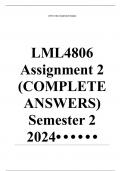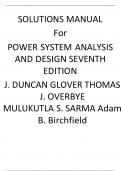Exam (elaborations)
Maternal Child Nursing Care 3rd CANADIAN Edition Keenan Lindsay Chapter 1 - 55 Updated 2023 / 9780323759199 / All Chapters with Answers and Rationals
- Course
- Institution
- Book
Maternal Child Nursing Care 3rd CANADIAN Edition Keenan Lindsay Chapter 1 - 55 Updated 2023 / 9780323759199 / All Chapters with Answers and Rationals
[Show more]












